Mrinmoy Sarkar
Mitigating shortage of labeled data using clustering-based active learning with diversity exploration
Jul 06, 2022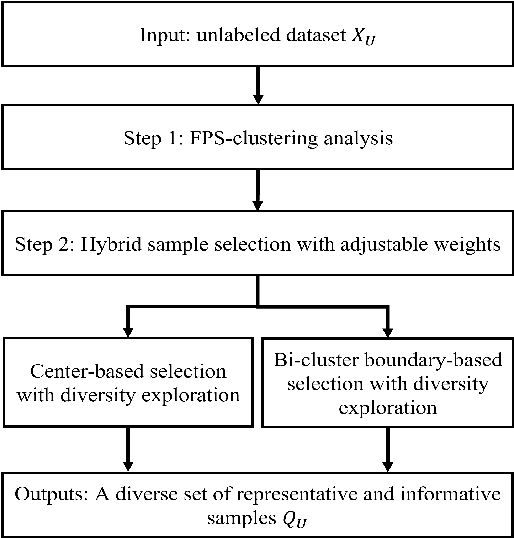
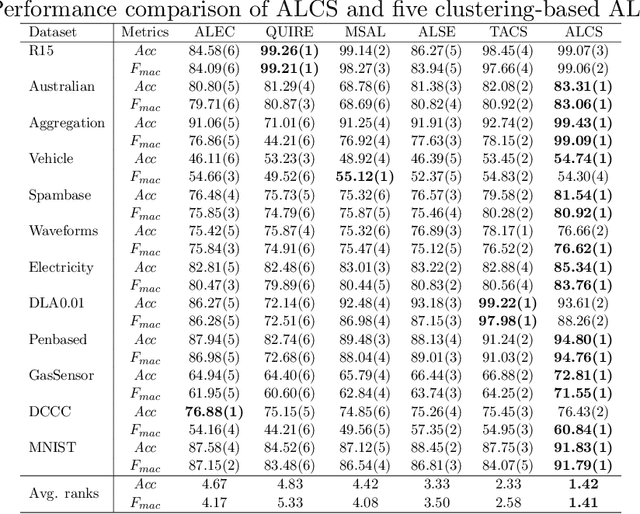

Abstract:In this paper, we proposed a new clustering-based active learning framework, namely Active Learning using a Clustering-based Sampling (ALCS), to address the shortage of labeled data. ALCS employs a density-based clustering approach to explore the cluster structure from the data without requiring exhaustive parameter tuning. A bi-cluster boundary-based sample query procedure is introduced to improve the learning performance for classifying highly overlapped classes. Additionally, we developed an effective diversity exploration strategy to address the redundancy among queried samples. Our experimental results justified the efficacy of the ALCS approach.
Salt Detection Using Segmentation of Seismic Image
Mar 25, 2022



Abstract:In this project, a state-of-the-art deep convolution neural network (DCNN) is presented to segment seismic images for salt detection below the earth's surface. Detection of salt location is very important for starting mining. Hence, a seismic image is used to detect the exact salt location under the earth's surface. However, precisely detecting the exact location of salt deposits is difficult. Therefore, professional seismic imaging still requires expert human interpretation of salt bodies. This leads to very subjective, highly variable renderings. Hence, to create the most accurate seismic images and 3D renderings, we need a robust algorithm that automatically and accurately identifies if a surface target is a salt or not. Since the performance of DCNN is well-known and well-established for object recognition in images, DCNN is a very good choice for this particular problem and being successfully applied to a dataset of seismic images in which each pixel is labeled as salt or not. The result of this algorithm is promising.
DA$^{\textbf{2}}$-Net : Diverse & Adaptive Attention Convolutional Neural Network
Nov 25, 2021


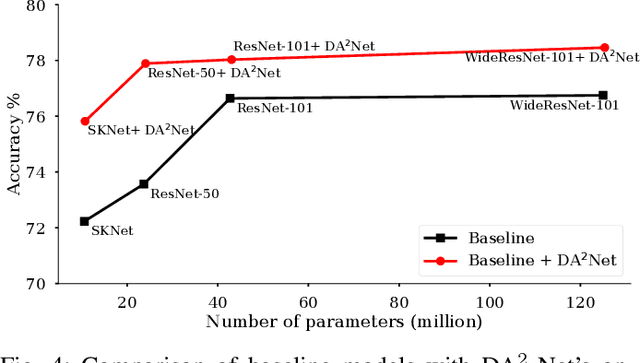
Abstract:Standard Convolutional Neural Network (CNN) designs rarely focus on the importance of explicitly capturing diverse features to enhance the network's performance. Instead, most existing methods follow an indirect approach of increasing or tuning the networks' depth and width, which in many cases significantly increases the computational cost. Inspired by a biological visual system, we propose a Diverse and Adaptive Attention Convolutional Network (DA$^{2}$-Net), which enables any feed-forward CNNs to explicitly capture diverse features and adaptively select and emphasize the most informative features to efficiently boost the network's performance. DA$^{2}$-Net incurs negligible computational overhead and it is designed to be easily integrated with any CNN architecture. We extensively evaluated DA$^{2}$-Net on benchmark datasets, including CIFAR100, SVHN, and ImageNet, with various CNN architectures. The experimental results show DA$^{2}$-Net provides a significant performance improvement with very minimal computational overhead.
A Supervised Feature Selection Method For Mixed-Type Data using Density-based Feature Clustering
Nov 10, 2021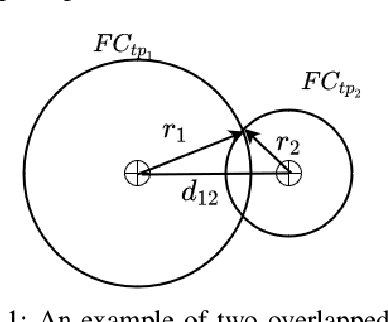
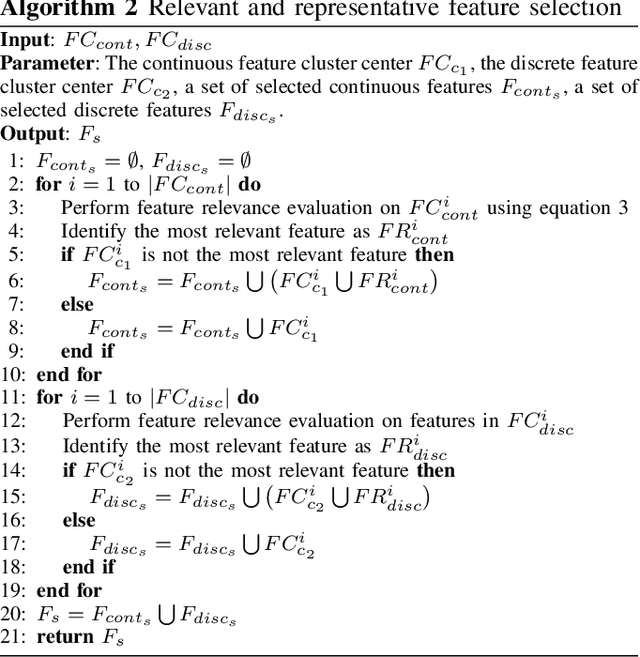


Abstract:Feature selection methods are widely used to address the high computational overheads and curse of dimensionality in classifying high-dimensional data. Most conventional feature selection methods focus on handling homogeneous features, while real-world datasets usually have a mixture of continuous and discrete features. Some recent mixed-type feature selection studies only select features with high relevance to class labels and ignore the redundancy among features. The determination of an appropriate feature subset is also a challenge. In this paper, a supervised feature selection method using density-based feature clustering (SFSDFC) is proposed to obtain an appropriate final feature subset for mixed-type data. SFSDFC decomposes the feature space into a set of disjoint feature clusters using a novel density-based clustering method. Then, an effective feature selection strategy is employed to obtain a subset of important features with minimal redundancy from those feature clusters. Extensive experiments as well as comparison studies with five state-of-the-art methods are conducted on SFSDFC using thirteen real-world benchmark datasets and results justify the efficacy of the SFSDFC method.
A Framework for eVTOL Performance Evaluation in Urban Air Mobility Realm
Nov 09, 2021
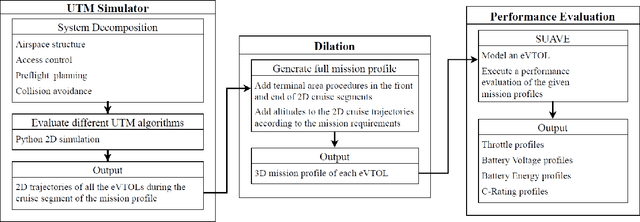
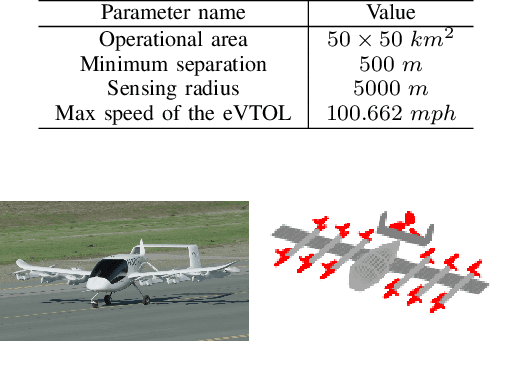

Abstract:In this paper, we developed a generalized simulation framework for the evaluation of electric vertical takeoff and landing vehicles (eVTOLs) in the context of Unmanned Aircraft Systems (UAS) Traffic Management (UTM) and under the concept of Urban Air Mobility (UAM). Unlike most existing studies, the proposed framework combines the utilization of UTM and eVTOLs to develop a realistic UAM testing platform. For this purpose, we first enhanced an existing UTM simulator to simulate the real-world UAM environment. Then, instead of using a simplified eVOTL model, a realistic eVTOL design tool, namely SUAVE, is employed and an dilation sub-module is introduced to bridge the gap between the UTM simulator and SUAVE eVTOL performance evaluation tool to elaborate the complete mission profile. Based on the developed simulation framework, experiments are conducted and the results are presented to analyze the performance of eVTOLs in the UAM environment.
A Clustering-based Framework for Classifying Data Streams
Jun 22, 2021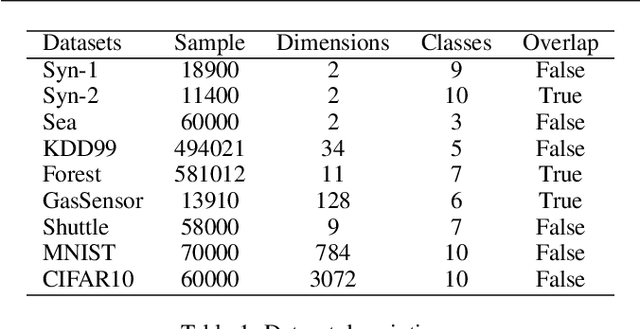


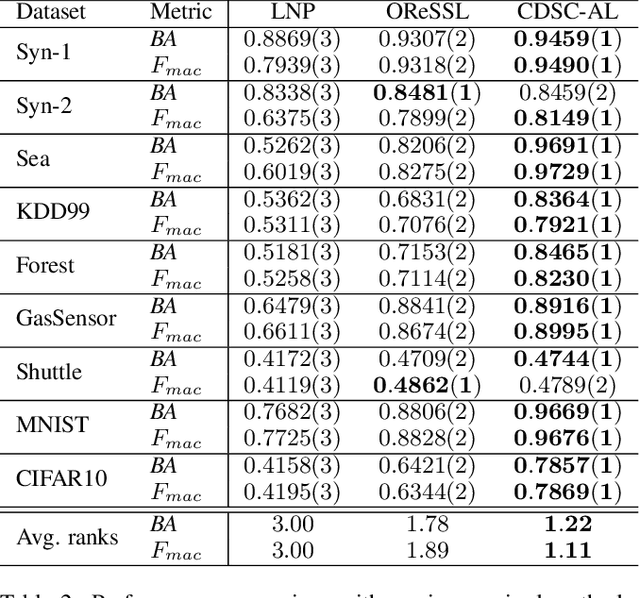
Abstract:The non-stationary nature of data streams strongly challenges traditional machine learning techniques. Although some solutions have been proposed to extend traditional machine learning techniques for handling data streams, these approaches either require an initial label set or rely on specialized design parameters. The overlap among classes and the labeling of data streams constitute other major challenges for classifying data streams. In this paper, we proposed a clustering-based data stream classification framework to handle non-stationary data streams without utilizing an initial label set. A density-based stream clustering procedure is used to capture novel concepts with a dynamic threshold and an effective active label querying strategy is introduced to continuously learn the new concepts from the data streams. The sub-cluster structure of each cluster is explored to handle the overlap among classes. Experimental results and quantitative comparison studies reveal that the proposed method provides statistically better or comparable performance than the existing methods.
Location Forensics Analysis Using ENF Sequences Extracted from Power and Audio Recordings
Dec 18, 2019



Abstract:Electrical network frequency (ENF) is the signature of a power distribution grid which represents the nominal frequency (50 or 60 Hz) of a power system network. Due to load variations in a power grid, ENF sequences experience fluctuations. These ENF variations are inherently located in a multimedia signal which is recorded close to the grid or directly from the mains power line. Therefore, a multimedia recording can be localized by analyzing the ENF sequences of that signal in absence of the concurrent power signal. In this paper, a novel approach to analyze location forensics using ENF sequences extracted from a number of power and audio recordings is proposed. The digital recordings are collected from different grid locations around the world. Potential feature components are determined from the ENF sequences. Then, a multi-class support vector machine (SVM) classification model is developed to validate the location authenticity of the recordings. The performance assessments affirm the efficacy of the presented work.
 Add to Chrome
Add to Chrome Add to Firefox
Add to Firefox Add to Edge
Add to Edge